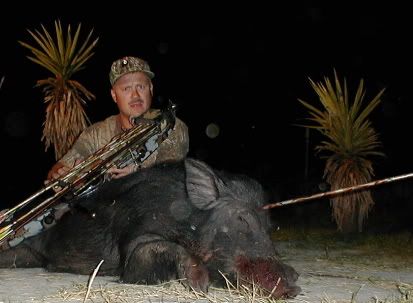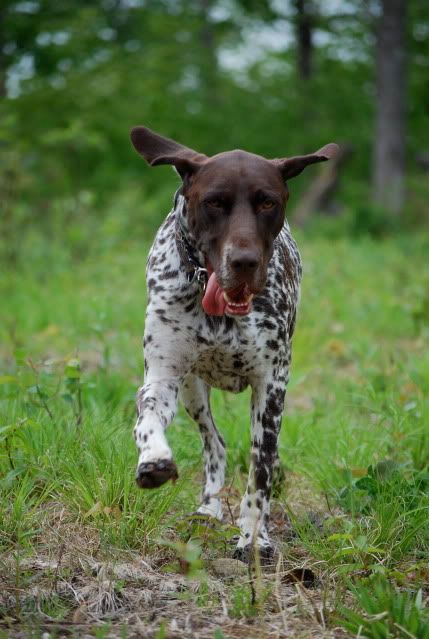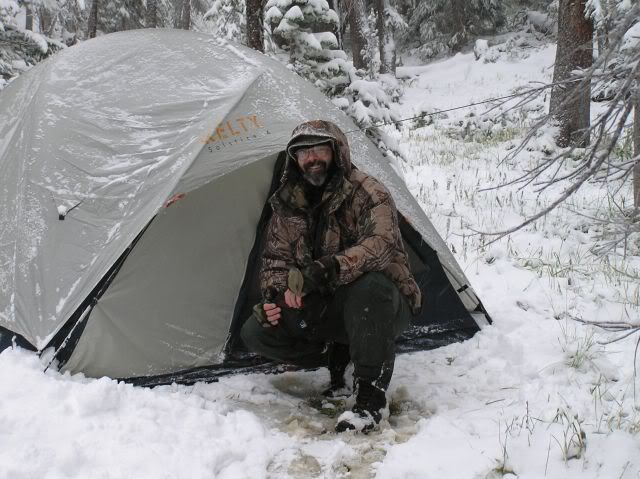Post by BT on Aug 7, 2006 23:09:15 GMT -5
O.K. , your mind is made up and you are focused on that compound...now what 
My advise is don't jump in with both feet on the first attempt.
More cash has been wasted do to novice error than anything else (I dare say) and there is no reason for you to continue the trend.
My suggestion is to start with a quality bow manufacturer and get it together with their budget model first.
Lets put it this way...you don't have to shoot a high weight/super fast bow to take a trophy so why bother if such a bow is not giving you an advantage?.
I believe the advantages of a low priced bow package out weights the higher end models due to the fact that you are going to be shooting sooner and sooner is better than later
The lower priced packages also allows you to have more money left over for other needs like climbing stands/blinds and such.
(It takes more than a bow to take that deer)
High let off is a great thing but for the beginner I would suggest a good wheel bow which is far smoother as opposed to a cam which is not by comparison.
A wheel bow also is a great all around design for finger shooters.
Shooting with fingers is something I would like you to consider because it is impossible to get in your stand and sudden remember the release you left at home.
If you don't have your fingers when you reach your stand,you probably wont want to hunt anyway
Shooting fingers is fast vanishing but it is hard to tell who is shooting what (release/fingers)when you look through winning scores at organized 3-D shoots.
The shorter the bow,the harder it is too shoot.
A longer bow is desirable for ease of learning to shoot as it is more stable so don't chase fashion...do what works
Brace height is another thing that can enhance or decrease the ability to shoot as well as possible.
Measured from the back of the bows grip to the string,the "Brace height" is best when set 7 1/2"+.
(The more the merrier!)
Bows with longer brace are going to be slower but this is not a race!
Balance should be set so that the bow (when held loosely in the hand) falls forward on release.
The front stabilizer can serve to do two things by aiding in quiting the bow and (with the correct weight) aiding in getting that forward motion.
A wrist sling is an important part of the bow.
A bow should be held lightly in the hand and not held at all once the bow is drawn.
Do not grab the bow on release!
This is the job of the wrist sling and it will do its job.
The urge to save your bow from certain fate is uncontrollable at first but don't worry....trust
Bow quivers that attach directly to the bow are inhibitors and I would suggest either learning to shoot with it on at all times or not at all.
My personal suggestion is to get a hip quiver and leave the counter balance off the bow till you master your skills
Peep sights,although not needed are popular and can help to get you shooting better in a hurry.
I would suggest not using the tube type though as this kind of alignment system is a weak link on any bow
If it is possible either get your pro-shop to tie in a peep or use a clamp over type which holds onto the string rather than being held by the string.
This is a basic list of do's and donts and mostly suggestions and if you don't see what you want to know ask...everyone is eager to assist!

My advise is don't jump in with both feet on the first attempt.

More cash has been wasted do to novice error than anything else (I dare say) and there is no reason for you to continue the trend.

My suggestion is to start with a quality bow manufacturer and get it together with their budget model first.
Lets put it this way...you don't have to shoot a high weight/super fast bow to take a trophy so why bother if such a bow is not giving you an advantage?.
I believe the advantages of a low priced bow package out weights the higher end models due to the fact that you are going to be shooting sooner and sooner is better than later

The lower priced packages also allows you to have more money left over for other needs like climbing stands/blinds and such.
(It takes more than a bow to take that deer)
High let off is a great thing but for the beginner I would suggest a good wheel bow which is far smoother as opposed to a cam which is not by comparison.
A wheel bow also is a great all around design for finger shooters.
Shooting with fingers is something I would like you to consider because it is impossible to get in your stand and sudden remember the release you left at home.

If you don't have your fingers when you reach your stand,you probably wont want to hunt anyway

Shooting fingers is fast vanishing but it is hard to tell who is shooting what (release/fingers)when you look through winning scores at organized 3-D shoots.
The shorter the bow,the harder it is too shoot.
A longer bow is desirable for ease of learning to shoot as it is more stable so don't chase fashion...do what works

Brace height is another thing that can enhance or decrease the ability to shoot as well as possible.
Measured from the back of the bows grip to the string,the "Brace height" is best when set 7 1/2"+.
(The more the merrier!)
Bows with longer brace are going to be slower but this is not a race!

Balance should be set so that the bow (when held loosely in the hand) falls forward on release.
The front stabilizer can serve to do two things by aiding in quiting the bow and (with the correct weight) aiding in getting that forward motion.
A wrist sling is an important part of the bow.
A bow should be held lightly in the hand and not held at all once the bow is drawn.
Do not grab the bow on release!
This is the job of the wrist sling and it will do its job.
The urge to save your bow from certain fate is uncontrollable at first but don't worry....trust

Bow quivers that attach directly to the bow are inhibitors and I would suggest either learning to shoot with it on at all times or not at all.
My personal suggestion is to get a hip quiver and leave the counter balance off the bow till you master your skills

Peep sights,although not needed are popular and can help to get you shooting better in a hurry.
I would suggest not using the tube type though as this kind of alignment system is a weak link on any bow

If it is possible either get your pro-shop to tie in a peep or use a clamp over type which holds onto the string rather than being held by the string.
This is a basic list of do's and donts and mostly suggestions and if you don't see what you want to know ask...everyone is eager to assist!







